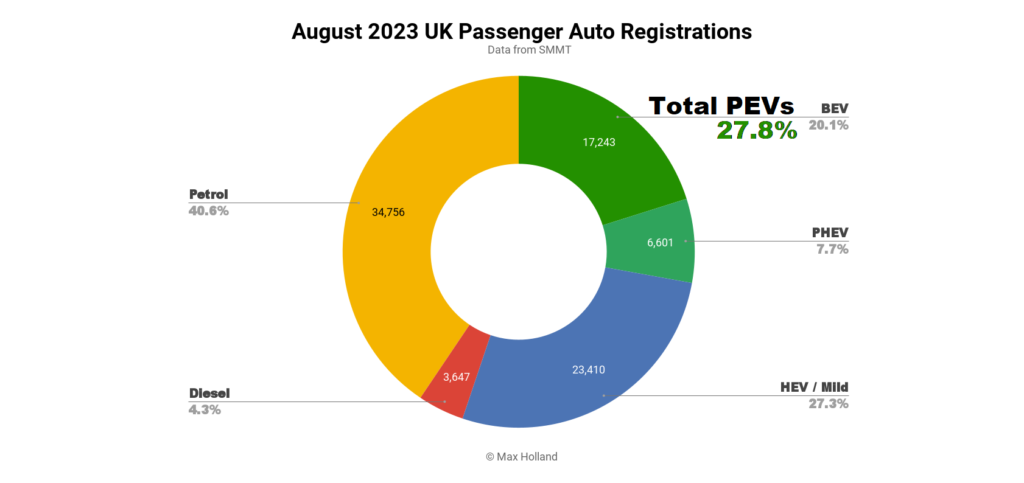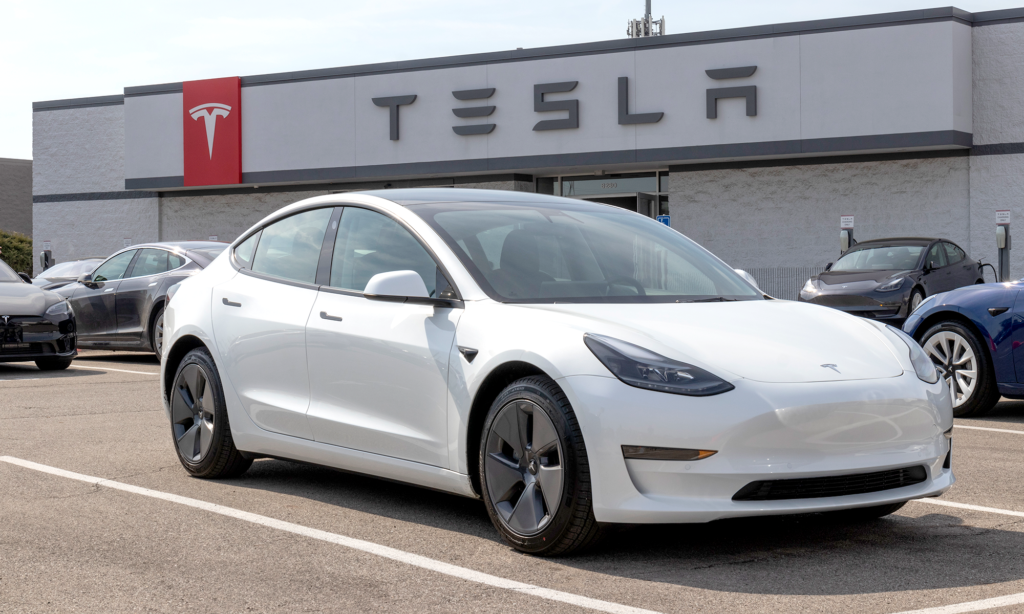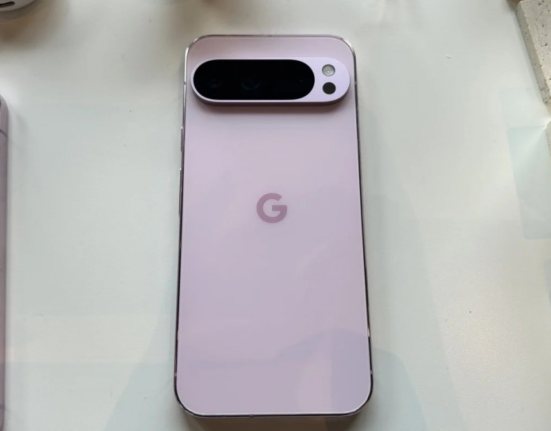Electric vehicle (EV) manufacturer Tesla (NASDAQ: TSLA) has achieved a significant milestone, delivering its 200,000th EV in the UK.
This accomplishment coincides with the UK surpassing 1 million EV sold in total. As a result, Tesla vehicles now make up nearly one-fifth of all EVs on British roads, a fact Tesla celebrated on X (formerly Twitter), thanking its customers on March 28.
History of Tesla Motors
The U.S. car market is saturated with established automakers like Ford (F), Honda (HMC), and Chevrolet (GM). But one company stands out from the mix: electric car maker Tesla Motors (TSLA). Tesla and its CEO Elon Musk gained notoriety in 2012 when it released its flagship car, the Model S.
Tesla’s release positioned it as one of the few successful independent automakers and a pioneer in the electric car market. Notably, it also proved to be a hit with auto buyers. The Model S, a sleek luxury sedan that starts at $74,990, is ranked best in class for safety by Euro NCAP. When the Model S premiered in 2012, Tesla made headlines when trade press gave it laurels. The electric plug-in car received a near-perfect score of 99 out of 100 from Consumer Reports in 2013, which noted this was “the highest score in our Ratings”.

By September 2014, the car set a new sales record for itself in the U.S. with 2,500 sold in just one month, and in Q1 2015, sales reached a new high at 10,030 sold.56 It is now considered a staple within the electric car stratosphere. As of March 26, 2024, the company’s market capitalization was $571 billion.
Contrary to popular belief, Tesla was not an overnight success. The company was founded in 2003 by two Silicon Valley engineers Martin Eberhard and Marc Tarpenning, who sought to make electric cars that were fast and fun to drive.
The seeds of the company go back to 1990 when Tarpenning met Eberhard, then an engineer at Wyse Technology, and they became good friends. The two had much in common including a passion for starting companies, and they soon launched companies including NuvoMedia, which released the Rocket eBook in 1998.
A passion for autos started soon after Eberhard went through a divorce and decided to buy a sports car. He considered entering the electric car industry after investing in a boutique electric automaker named AC Propulsion.
In 2001, Eberhard and Tarpenning met Elon Musk after hearing him speak at a Mars Society talk at Stanford University. At that time, Musk already had a portfolio of successful start-ups. In 1998 Peter Thiel, and Max Levchin co-founded an online payments company. In 1999 Elon Musk founded a similar company called X.com, and they merged to form PayPal.11 The group then sold PayPal to eBay in 2002. Impressively, Musk made $165 million in stocks from the sale. Soon after, Musk launched Space X, a company that designs, manufactures, and launches advanced rockets and spacecraft.
Tesla was officially incorporated in 2003 with the goal of inventing an electric car that was powerful, beautiful, and with zero emissions. Other co-founders were JB Straubel—the company’s chief technology officer (CTO) until 2019—and Ian Wright, who left Tesla in 2004. Wright later founded the electric vehicle powertrain company Wrightspeed.
In 2004, the company’s co-founders went through initial rounds of investing with venture capital firms. Musk led the initial round of funding and soon joined as the head of the board of directors. Future investors in subsequent rounds would include friends, family, and a litany of VC firms, including Valor Equity Partners.
Tesla CEO: Elon Musk
Elon Musk has become the face of Tesla and is often mistaken as the company’s founder. Musk is a South African-born, Canadian-American who was trained as an engineer. He earned a dual bachelor of science degree in Physics and Economics from the University of Pennsylvania.
That said, he is an entrepreneur and inventor at heart. In 1995, Musk enrolled in Stanford’s Applied Physics Ph.D. program but dropped out for entrepreneurship in the then nascent and growing internet space.
Soon after, he launched several small successful companies, including the online publishing company Zip2. From that sale, Musk started X.com, an online bank that merged with Confinity to form PayPal.
Tesla’s growing footprint in the UK EV market
Tesla’s presence in the UK began in 2014 with the introduction of the Model S.
Since then, the company has grown significantly, boasting over 1,400 employees and 1,400 supercharger stations nationwide.
They also operate a direct-to-consumer sales model with service centers in 40 locations, including a mobile service option for half their vehicles.
In addition to car sales and service, Tesla is making improvements in the energy storage sector.
They have deployed 1GWh of Megapack battery storage systems across 15 sites in the UK.

Tesla has established itself as the undisputed leader in the UK electric vehicle (EV) market. Here’s a breakdown of their dominance and what it means:
- Market Share: In 2023, Tesla held a commanding 15.2% share of the UK EV market, with their closest competitor, MG, trailing far behind at 9.2%. This significant lead highlights Tesla’s brand recognition and consumer preference.
- Sales Figures: Tesla sold an impressive 47,840 EVs in the UK during 2
(2023) , demonstrating strong demand for their vehicles. The Model Y and Model 3 were the top sellers, catering to the SUV and sedan segments respectively.
Possible Reasons for Success:
- Brand Recognition: Tesla has been a pioneer in the EV market, establishing a strong brand associated with innovation and performance.
- Charging Network: Tesla’s Supercharger network offers a significant advantage, providing convenient and reliable charging options for long-distance travel.
- Model Range: Tesla offers a variety of EV models to cater to different needs and budgets, from the luxury Model S to the more affordable Model 3.
Looking Ahead:
- Competition: While Tesla is currently dominant, the UK EV market is becoming increasingly competitive with established automakers entering the fray with new EV models.
- Future Innovation: Tesla needs to maintain its edge through continuous innovation in battery technology, vehicle design, and autonomous driving features.
Overall, Tesla’s success in the UK EV market is undeniable. However, the future will depend on their ability to adapt and compete in a rapidly evolving landscape.
Affordability as key to wider adoption
In conclusion, Tesla’s significant sales milestone underscores its leadership in the UK’s growing EV market.
However, future growth hinges on addressing two aspects: affordability – Tesla’s current vehicles target the high-end market. Wider EV adoption might require a wider range of price points.
Additionally, building out more charging stations is still important for long-term success.

Here’s how affordability factors into Tesla’s dominance and the future of the UK EV market:
The Affordability Challenge:
- Upfront Cost: Tesla vehicles are generally considered premium EVs, with a higher price tag compared to many gasoline-powered cars. This can be a barrier for budget-conscious consumers.
- Government Incentives: While the UK government offers incentives for EV purchases, they might not be enough to bridge the price gap for all consumers.
Tesla’s Strategy:
- Limited Model Range for Affordability: Tesla currently focuses on a limited range of models, with the most affordable option, the Model 3, still costing more than many conventional cars.
Impact on Wider Adoption:
- Slowdown of Growth: High upfront costs could potentially slow down the overall growth rate of EV adoption in the UK.
- Focus on Luxury Market: Tesla’s current strategy might limit their reach to a broader segment of the market and solidify their brand in the luxury EV segment.
The Road Ahead:
- Need for More Affordable Options: For the UK EV market to truly flourish, a wider variety of affordable EV options from different manufacturers is crucial.
- Government Policies: The UK government might need to consider extending or tailoring incentives to make EVs more accessible to a wider range of income brackets.
Tesla’s Future:
- Expanding Model Range: Tesla might benefit from developing more affordable models to capture a larger share of the market.
- Focus on Efficiency and Range: Continuing innovation to improve battery efficiency and range could indirectly address affordability concerns by reducing long-term running costs.
Tesla’s influence is undeniable, but its role in shaping a truly sustainable transportation future in the UK depends on addressing these considerations.
Tesla under Musk: Model S, Model 3, and Model Y
In 2012 Tesla stopped production of the Roadster to concentrate on its new Model S sedan, which was acclaimed by automotive critics for its performance and design. It came with three different battery options, which gave estimated ranges of 235 or 300 miles (379 or 483 km). The battery option with the highest performance gave an acceleration of 0 to 60 miles (96 km) per hour in slightly more than four seconds and a top speed of 130 miles (209 km) per hour.
Unlike the Roadster, which carried its battery system at the back of the car, the Model S had its underneath the floor, which gave extra storage space in back and improved handling because of its low centre of gravity; this battery placement was used on later Tesla models. The Tesla Autopilot, a form of semiautonomous driving, was made available in 2014 on the Model S (and later on other models).
Beginning in 2012, Tesla built stations called Superchargers in the United States and Europe designed for charging batteries quickly and at no extra cost to Tesla owners. Later versions of those stations also had the capability of complete replacement of the Model S battery pack.
Tesla released the Model X, a “crossover” vehicle (i.e., a vehicle with features of a sport-utility vehicle but built on a car chassis), in 2015. The Model X had a maximum battery range of about 340 miles (547 km) and seating for up to seven.
The company began building large factories it called Gigafactories to produce batteries and vehicles. The first such factory opened in 2016 outside Reno, Nevada. Gigafactories were opened in Buffalo, New York, and Shanghai, China, and more Gigafactories were planned.
Because of demand for a more inexpensive vehicle, the Model 3, a four-door sedan with a range of up to 353 miles (568 km) and a price of $35,000, began production in 2017. The car had an all-glass roof, and most controls were on a 15-inch (38-cm) central touchscreen. The Model 3 became Tesla’s best-selling model and the best-selling electric car of all time, surpassing the Nissan Leaf.
The company also branched out into solar energy products. A line of batteries to store electric power from solar energy for use in homes and businesses was unveiled in 2015. Tesla bought the solar panel company SolarCity in 2016 and offered rooftop solar panels, a solar roof with energy-generating tiles, and a large battery called the Powerwall to store the power generated for use when the sun was not shining or as a backup in case of a power outage. In 2017 the company changed its name to Tesla, Inc., to reflect that it no longer sold just cars.
The following year Musk made a series of tweets about taking Tesla private, claiming that he had secured funding. In September 2018 the U.S. Securities and Exchange Commission (SEC) charged him with securities fraud, alleging that his tweets were “false and misleading.” Later that month Tesla’s board rejected a proposed settlement from the SEC, reportedly after Musk threatened to resign.
However, news of the rejected deal sent Tesla’s stock plummeting, and the board quickly accepted a less generous settlement, the terms of which included Musk stepping down as chairman for at least three years and that his tweets were to be pre-approved by Tesla’s lawyers. However, he was allowed to remain as CEO. In addition, both Tesla and Musk were fined $20 million.
The company released another crossover, the Model Y, in 2020. The Model Y was smaller and less expensive than the Model X and shared many of the same parts with the Model 3. Sales of the Model Y quickly became comparable to that of the Model 3, and Musk expressed confidence that it would become Tesla’s best-selling model. Tesla announced several models to be released early in the 2020s, including a second version of the Roadster, a semi-trailer truck, and a pickup truck, the Cybertruck, which had a boxy angular design that excited controversy when it was first unveiled.
Disclaimer ||
The Information provided on this website article does not constitute investment advice ,financial advice,trading advice,or any other sort of advice and you should not treat any of the website’s content as such.
Always do your own research! DYOR NFA
Coin Data Cap does not recommend that any cryptocurrency should be bought, sold or held by you, Do Conduct your own due diligence and consult your financial adviser before making any investment decisions!



